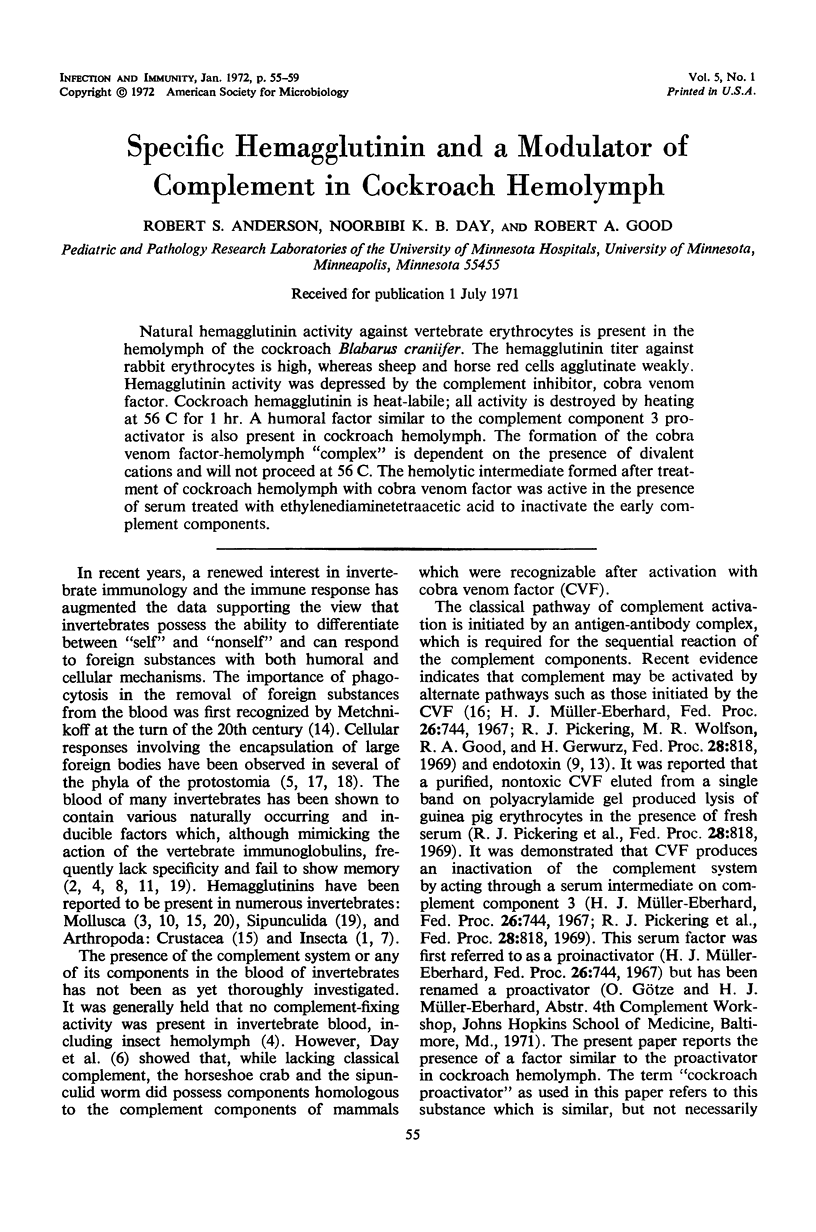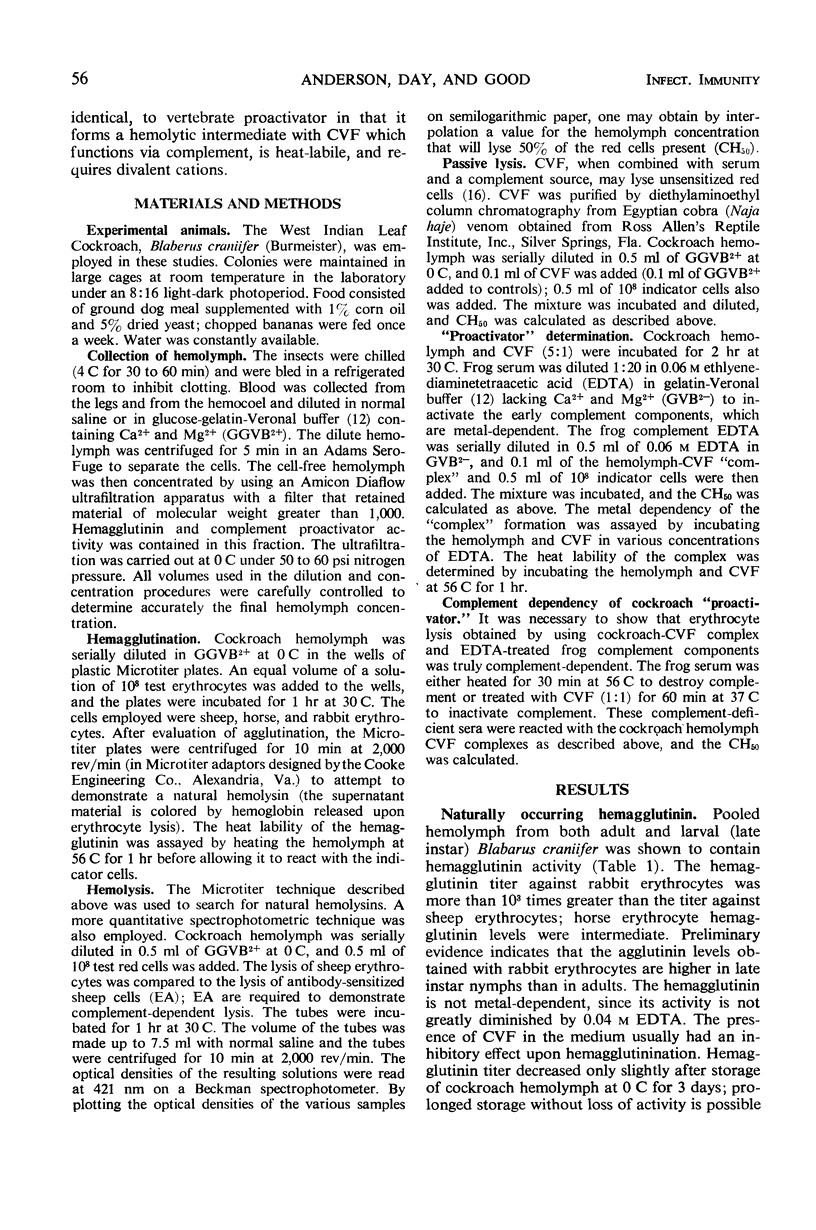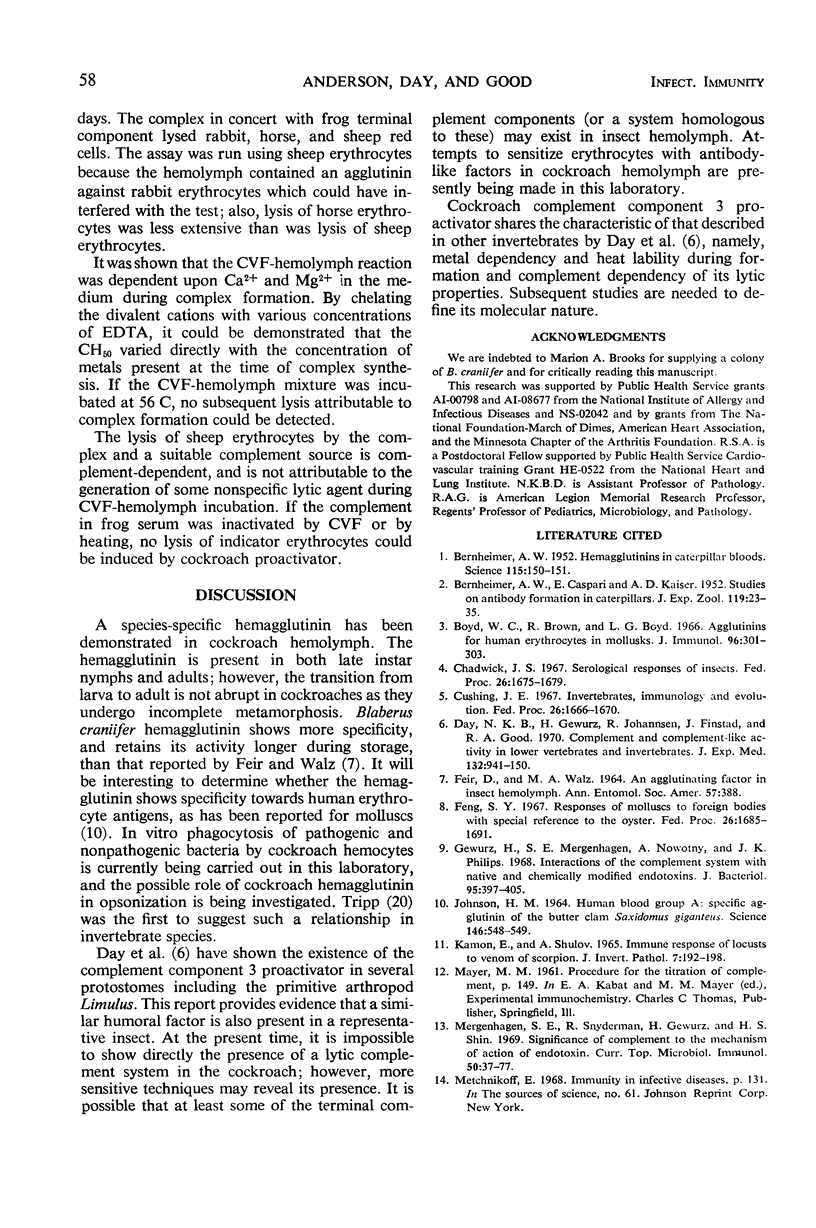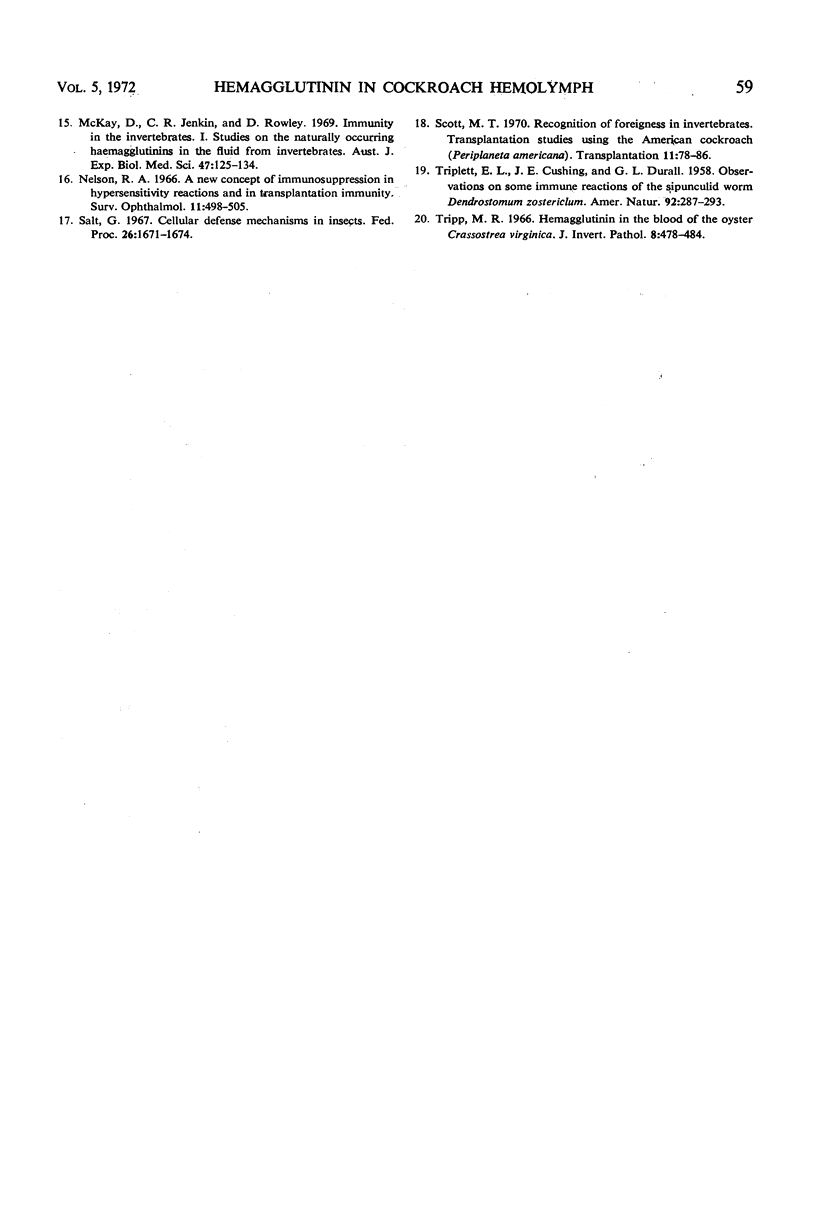Abstract
Natural hemagglutinin activity against vertebrate erythrocytes is present in the hemolymph of the cockroach Blabarus craniifer. The hemagglutinin titer against rabbit erythrocytes is high, whereas sheep and horse red cells agglutinate weakly. Hemagglutinin activity was depressed by the complement inhibitor, cobra venom factor. Cockroach hemagglutinin is heat-labile; all activity is destroyed by heating at 56 C for 1 hr. A humoral factor similar to the complement component 3 proactivator is also present in cockroach hemolymph. The formation of the cobra venom factor-hemolymph “complex” is dependent on the presence of divalent cations and will not proceed at 56 C. The hemolytic intermediate formed after treatment of cockroach hemolymph with cobra venom factor was active in the presence of serum treated with ethylenediaminetetraacetic acid to inactivate the early complement components.
Full text
PDF




Selected References
These references are in PubMed. This may not be the complete list of references from this article.
- BERNHEIMER A. W. Hemagglutinins in caterpillar bloods. Science. 1952 Feb 8;115(2980):150–151. doi: 10.1126/science.115.2980.150. [DOI] [PubMed] [Google Scholar]
- Boyd W. C., Brown R., Boyd L. G. Agglutinins for human erythrocytes in mollusks. J Immunol. 1966 Feb;96(2):301–303. [PubMed] [Google Scholar]
- Chadwick J. S. Serological responses of insects. Fed Proc. 1967 Nov-Dec;26(6):1675–1679. [PubMed] [Google Scholar]
- Cushing J. E. Invertebrates, immunology and evolution. Fed Proc. 1967 Nov-Dec;26(6):1666–1670. [PubMed] [Google Scholar]
- Day N. K., Gewurz H., Johannsen R., Finstad J., Good R. A. Complement and complement-like activity in lower vertebrates and invertebrates. J Exp Med. 1970 Nov;132(5):941–950. doi: 10.1084/jem.132.5.941. [DOI] [PMC free article] [PubMed] [Google Scholar]
- Feng S. Y. Responses of molluscs to foreign bodies, with special reference to the oyster. Fed Proc. 1967 Nov-Dec;26(6):1685–1692. [PubMed] [Google Scholar]
- Gewurz H., Mergenhagen S. E., Nowotny A., Phillips J. K. Interactions of the complement system with native and chemically modified endotoxins. J Bacteriol. 1968 Feb;95(2):397–405. doi: 10.1128/jb.95.2.397-405.1968. [DOI] [PMC free article] [PubMed] [Google Scholar]
- JOHNSON H. M. HUMAN BLOOD GROUP A; SPECIFIC AGGLUTININ OF THE BUTTER CLAM SAXIDOMUS GIGANTEUS. Science. 1964 Oct 23;146(3643):548–549. doi: 10.1126/science.146.3643.548. [DOI] [PubMed] [Google Scholar]
- Kamon E., Shulov A. Immune response of locusts to venom of the scorpion. J Invertebr Pathol. 1965 Jun;7(2):192–198. doi: 10.1016/0022-2011(65)90037-6. [DOI] [PubMed] [Google Scholar]
- McKay D., Jenkin C. R., Rowley D. Immunity in the invertebrates. I. Studies on the naturally occurring haemagglutinins in the fluid from invertebrates. Aust J Exp Biol Med Sci. 1969 Feb;47(1):125–134. doi: 10.1038/icb.1969.12. [DOI] [PubMed] [Google Scholar]
- Mergenhagen S. E., Snyderman R., Gewurz H., Shin H. S. Significance of complement to the mechanism of action of endotoxin. Curr Top Microbiol Immunol. 1969;50:37–77. doi: 10.1007/978-3-642-46169-9_2. [DOI] [PubMed] [Google Scholar]
- Salt G. Cellular defense mechanisms in insects. Fed Proc. 1967 Nov-Dec;26(6):1671–1674. [PubMed] [Google Scholar]


